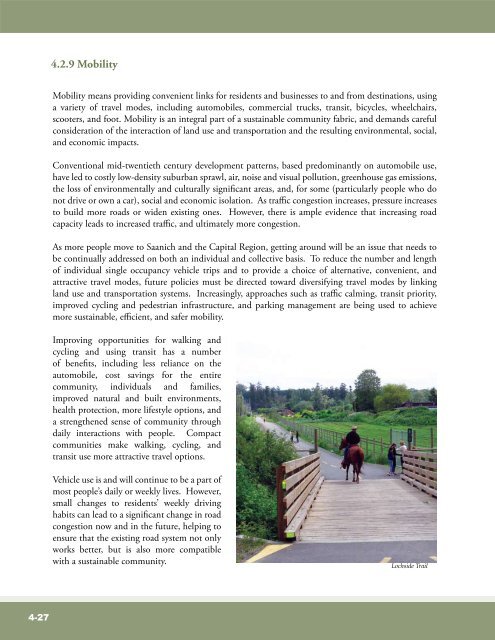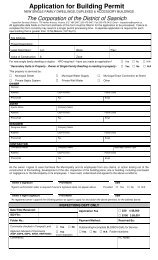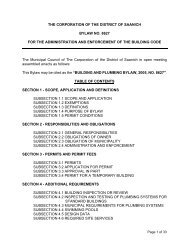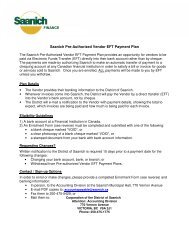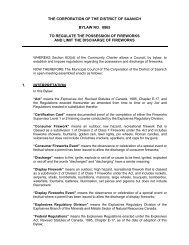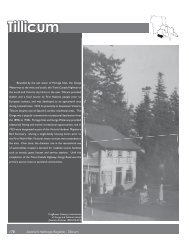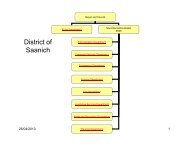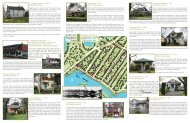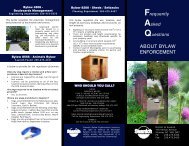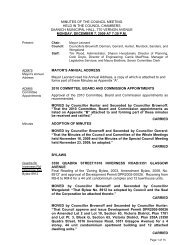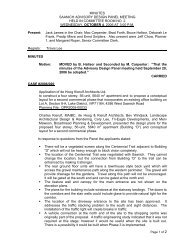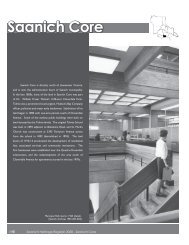District of Saanich-Official Community Plan
District of Saanich-Official Community Plan
District of Saanich-Official Community Plan
- No tags were found...
You also want an ePaper? Increase the reach of your titles
YUMPU automatically turns print PDFs into web optimized ePapers that Google loves.
4.2.9 MobilityMobility means providing convenient links for residents and businesses to and from destinations, usinga variety <strong>of</strong> travel modes, including automobiles, commercial trucks, transit, bicycles, wheelchairs,scooters, and foot. Mobility is an integral part <strong>of</strong> a sustainable community fabric, and demands carefulconsideration <strong>of</strong> the interaction <strong>of</strong> land use and transportation and the resulting environmental, social,and economic impacts.Conventional mid-twentieth century development patterns, based predominantly on automobile use,have led to costly low-density suburban sprawl, air, noise and visual pollution, greenhouse gas emissions,the loss <strong>of</strong> environmentally and culturally significant areas, and, for some (particularly people who donot drive or own a car), social and economic isolation. As traffic congestion increases, pressure increasesto build more roads or widen existing ones. However, there is ample evidence that increasing roadcapacity leads to increased traffic, and ultimately more congestion.As more people move to <strong>Saanich</strong> and the Capital Region, getting around will be an issue that needs tobe continually addressed on both an individual and collective basis. To reduce the number and length<strong>of</strong> individual single occupancy vehicle trips and to provide a choice <strong>of</strong> alternative, convenient, andattractive travel modes, future policies must be directed toward diversifying travel modes by linkingland use and transportation systems. Increasingly, approaches such as traffic calming, transit priority,improved cycling and pedestrian infrastructure, and parking management are being used to achievemore sustainable, efficient, and safer mobility.Improving opportunities for walking andcycling and using transit has a number<strong>of</strong> benefits, including less reliance on theautomobile, cost savings for the entirecommunity, individuals and families,improved natural and built environments,health protection, more lifestyle options, anda strengthened sense <strong>of</strong> community throughdaily interactions with people. Compactcommunities make walking, cycling, andtransit use more attractive travel options.Vehicle use is and will continue to be a part <strong>of</strong>most people’s daily or weekly lives. However,small changes to residents’ weekly drivinghabits can lead to a significant change in roadcongestion now and in the future, helping toensure that the existing road system not onlyworks better, but is also more compatiblewith a sustainable community.Lochside Trail4-27


